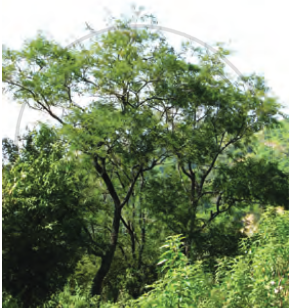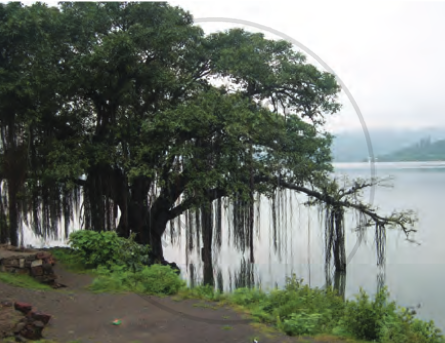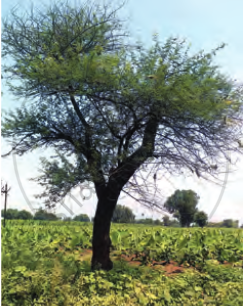Topics
Field Visit
Location and Extent
Physiography and Drainage
- Physical Divisions of India
- The North Indian Mountains
- The Himalayas
- North Indian Plains
- The Peninsular Indian Plateau
- The Indian Coastal Plains
- The Indian Islands
- Physiography of Brazil
- Brazilian Highlands
- The Great Escarpment in Brazil
- Coastline of Brazil
- Brazilian Plains
- Brazilian Island
- Drainage of Brazil
- Drainage Systems of India
- Himalayan Rivers
- Peninsular Rivers
Climate
Natural Vegetation and Wildlife
Population
Human Settlements
Economy and Occupations
Tourism, Transport and Communication
Geography - Physical Divisions of India
Identification of Physical divisions
- Identification of Physical Divisions
Geography - North Indian Mountains
Himalayas
Associated mountains
- Concept of Associated Mountains
Geography - North Indian Plain Region
Deserts
- Desert
Western Plains
- Concept of Western Plains
Central Plains
- Concept on Central Plains
Delta region
- Concept of Delta Region
Eastern Plains
- Concept of Eastern Plains
Geography - Peninsular Plateau Region
Chhotta Nagpur Plateau
- Concept for Chhotta Nagpur Plateau
Malwa Plateau
- Concept on Malwa Plateau
Maharashtra Plateau
- Concept for Maharashtra Plateau
Karnataka Plateau
- Concept for Karnataka Plateau
Telangana Plateau
- Concept for Telangana Plateau
Geography - Western Ghats and Eastern Ghats
Eastern Ghats
- Concept on Eastern Ghats
Sahyadries
- Concept on Sahyadries
Geography - Coastal Region
- Geography - Coastal Region
Eastern coastal plain
- Coastal Region - Eastern Coastal Plain
- Concept for Western Coastal Plain
Western coastal plain
- Concept for Western Coastal Plain
Geography - Indian Islands
- Geography - Indian Islands
Eastern Islands
- Indian Islands - Eastern Islands
Western Islands
- Indian Islands - Western Islands
Geography - Practical 1
Cartography
- Concept on Cartography
Geography - Practical 2
Two dimensional diagrams
- Two Dimensional Shapes
One dimensional diagrams
- Concept on One Dimensional Diagrams
Economics - Introduction of an Economy
Introduction of an Economy
- Economy
- Types of Economy
- Main Features of Economy
Economics - Basic problems of an economy solution
Solutions
- Concept for Capitalism
- Concept for Socialism
- Mixed Economy
Problems
- Introduction of Basic Problems of an Economy
- Problems- for Whom to Produce
- Problem - How Much to Produce
- Problem - by Whom to Produce
Economics - Inflation
Introduction
- Introduction of Inflation
Effects of inflation
- Effects of Inflation
Measures of Inflation
- Measures of Inflation
Causes of inflation
- Causes of Inflation
Economics - Public distribution system and consumer protection
- Measures of Inflation
Public Distribution system - meaning and explanation
- Public Distribution System - Meaning and Explanation
Introduction
- Introduction of Public Distribution System and Consumer Protection
Objectives of Public Distribution system
- Objectives of Public Distribution System
Remedial Measures
- Remedial Measures Public Distribution System and Consumer Protection
Consumer Protection
- Consumer Protection - Rights and Duties of Cunsumer, Food Adulteration
Drawbacks of Public Distribution system
- Drawbacks of Public Distribution System
Progress of Public Distribution system
- Progress of Public Distribution System
Notes
Tropical Deciduous Forest:
- These forests are also known as the monsoon forests.
- They are the most common forests in India.
- These forests are further classified into two types based on water availability:
(i) Moist deciduous forests and
(ii) Dry deciduous forests.
(i) Moist Deciduous Forests:
(a) Climatic Conditions: Such forests are found in areas with moderate or low annual rainfall of 100 cm to 200 cm, mean annual temperatures of 24°C and 27°C, and humidity percentages of 50 to 80.
(b) Distribution: These forests can be found in the northeastern part of the Peninsula, along the Himalayan foothills and the eastern slopes of the Western Ghats. They cover a larger area than the Evergreen forests in Uttar Pradesh, Maharashtra, Karnataka, and Tamil Nadu.
(c) Characteristic Features: During the spring and early summer, when water storage is acute, the trees in these forests shed their leaves every six to eight weeks. Furthermore, the subsoil water is insufficient for the trees to retain their leaves all year. A specific species can be found all over the place. They are the most commercially exploited forests in India. Sal, teak, arjun, shisham, mahua, mulberry, palas, semul, and sandalwood are common trees in such forests.
(d) Economical Value: Tropical deciduous forests are the most commercially exploited. They provide a variety of other products in addition to valuable timber. Sandalwood from these forests is in high demand both in India and abroad.
(ii) Dry Deciduous Forests:
(a) Climatic Conditions: These forests are found in areas with a mean annual temperature of 23°C to 27°C, annual rainfall of 70 cm to 100 cm, and humidity of 51 to 58%.
(b) Distribution: These forests can be found in the rainier regions of the Pennisular Plateau as well as the plains of Bihar and Uttar Pradesh.
(c) Characteristic Features: These forests grow vigorously between moist deciduous forests (in the east) and tropical thorn forests (in the west). These forests adapt into moist deciduous forests along the wetter margins, but degrade into thorn forests along the drier margins. These forests have open stretches of teak and other trees interspersed with patches of grass in the northern Indian plains and higher rainfall areas of the Peninsular Plateau. During the dry season, the trees in these forests shed all of their leaves, giving the forests the appearance of a vast grassland with naked trees. The common trees of these forests are teak, tendu, sal, rosewood, amaltas, bel, khair, axlewood, etc.
(d) Economical Value: The trees in these forests provide timber, fruits, and other useful products. Large areas of these forests have been cleared for agricultural activities.
|
Khair |
Banyan |
Babul |
Related QuestionsVIEW ALL [4]
Match the following:
| Column ‘A’ | Column ‘B’ |
| 1. Evergreen forest | a. Sundri |
| 2. Deciduous forest | b. Pine |
| 3. Coastal forest | c. Pau Brasil |
| 4. Himalayan forest | d. Khejadi |
| 5. Thorny and bush type vegetation | e. Teak |
| f. Amar |



